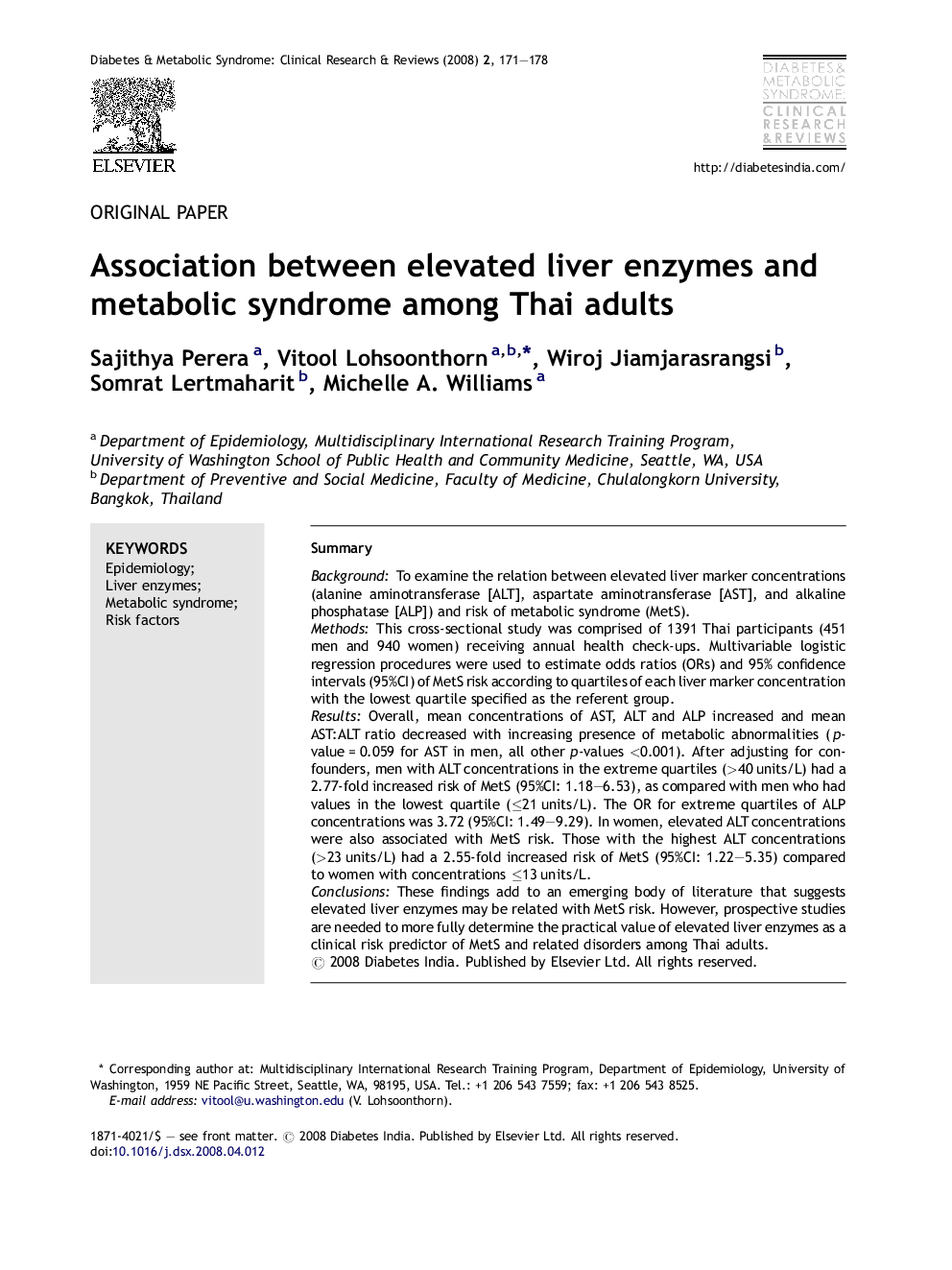| Article ID | Journal | Published Year | Pages | File Type |
|---|---|---|---|---|
| 2910225 | Diabetes & Metabolic Syndrome: Clinical Research & Reviews | 2008 | 8 Pages |
SummaryBackgroundTo examine the relation between elevated liver marker concentrations (alanine aminotransferase [ALT], aspartate aminotransferase [AST], and alkaline phosphatase [ALP]) and risk of metabolic syndrome (MetS).MethodsThis cross-sectional study was comprised of 1391 Thai participants (451 men and 940 women) receiving annual health check-ups. Multivariable logistic regression procedures were used to estimate odds ratios (ORs) and 95% confidence intervals (95%CI) of MetS risk according to quartiles of each liver marker concentration with the lowest quartile specified as the referent group.ResultsOverall, mean concentrations of AST, ALT and ALP increased and mean AST:ALT ratio decreased with increasing presence of metabolic abnormalities (p-value = 0.059 for AST in men, all other p-values <0.001). After adjusting for confounders, men with ALT concentrations in the extreme quartiles (>40 units/L) had a 2.77-fold increased risk of MetS (95%CI: 1.18–6.53), as compared with men who had values in the lowest quartile (≤21 units/L). The OR for extreme quartiles of ALP concentrations was 3.72 (95%CI: 1.49–9.29). In women, elevated ALT concentrations were also associated with MetS risk. Those with the highest ALT concentrations (>23 units/L) had a 2.55-fold increased risk of MetS (95%CI: 1.22–5.35) compared to women with concentrations ≤13 units/L.ConclusionsThese findings add to an emerging body of literature that suggests elevated liver enzymes may be related with MetS risk. However, prospective studies are needed to more fully determine the practical value of elevated liver enzymes as a clinical risk predictor of MetS and related disorders among Thai adults.
